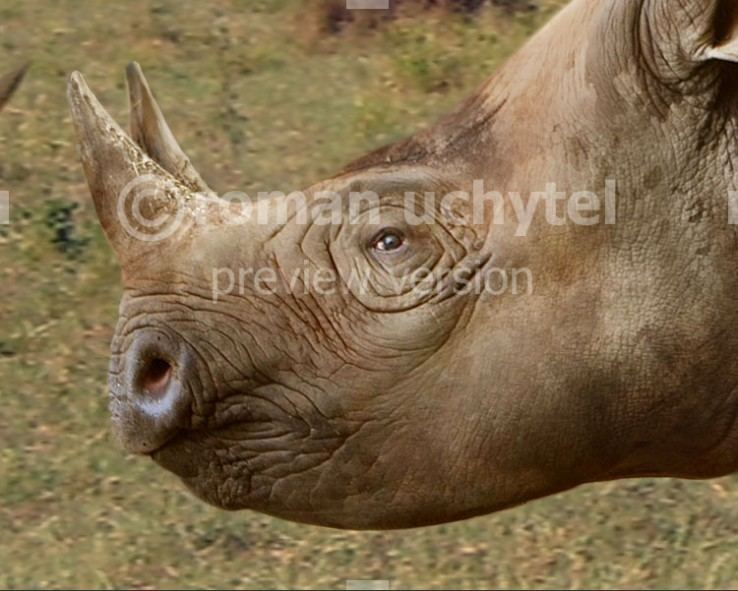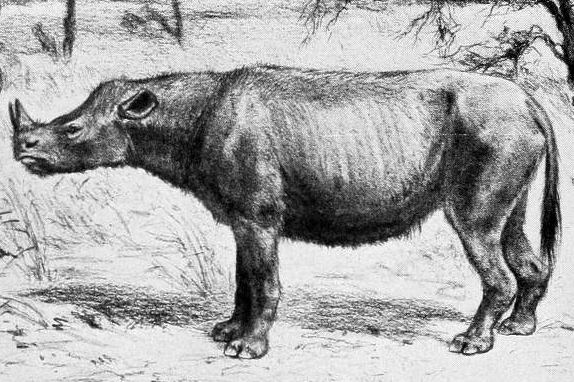Family Rhinocerotidae Rank Genus | Phylum Chordata Order Odd-toed ungulate | |
 | ||
Similar Diceratherium, Odd‑toed ungulate, Teleoceras, Aphelops, Subhyracodon | ||
Menoceras graveyard
Menoceras ("Crescent Horns") is a genus of extinct, small rhinoceros endemic to most of southern North America and ranged as far south as Panama during the early Miocene epoch. It lived from around 30.7—19.7 Ma, existing for approximately 11 million years.
Contents
- Menoceras graveyard
- Menoceras found here by carnegie exploration
- Description
- Paleobiology
- Taxonomy
- Fossil distribution
- References

Menoceras found here by carnegie exploration
Description

Male Menoceras sported two horns side by side at the tip of the nose, whereas the females were hornless. All other rhino genera, save the related genus Diceratherium, have their horns arranged one behind the other. Either gender of Menoceros grew to a length of 5 feet (1.5 meters) long, around the size of a large pig, or a domesticated sheep.
Paleobiology

Menoceras roamed across a tropical, savanna-like grassland and plains environment that covered much of North America (Prothero, 2005). Because of the massive accumulations of fossil bones of this animal, particularly at Agate Springs Nebraska, Menoceras may have lived in large herds. However, other sites i.e. Martin-Anthony site Martin County, Florida, and Cady Mountains Horse Quarry, San Bernardino County, California.
Taxonomy

Menoceras was named by Troxell and assigned to Rhinocerotidae by Troxell in 1921. It was synonymized subjectively with Diceratherium by Matthew in 1931 and Wood in 1964. Again assigned to Rhinocerotidae by Prothero, Guerrin, Manning in 1989. Tanner (1969), Wilson and Schiebout (1981), Prothero and Manning (1987), Carroll (1988) and Prothero et al. (1989); and to Menoceratinae by Prothero (1998).
Fossil distribution
Fossil distribution is as far north as New Jersey, south to Florida (3 collections) and Texas (6 collections), as far west as Nebraska (7 collections) and California (2 collections).
The Panamanian find was determined to be 19.7 Ma (AEO). It was found in the Gaillard Cut in Panama in "a 45 m thick section (narrow stratigraphic interval)" It was reposited in the Smithsonian Institution, Washington, D.C. Other sites:
